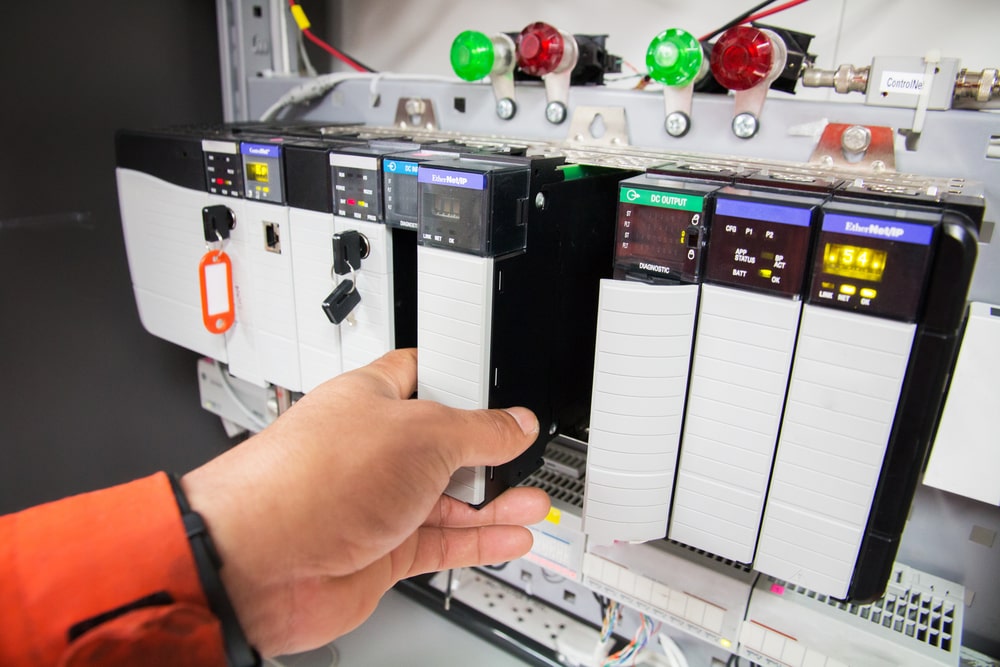Industrial machine learning is a new concept. Manufacturers around the world are already looking for ways to take advantage of this new technology. One of the most important devices in these specialized machine learning applications is a PLC.

Shutterstock Licensed Photo
PLCs are Invaluable to Modern Machine Learning in Specific Industrial Applications
In 2018, Louis Columbus, a senior Forbes contributor, wrote an article on the impact of machine learning on the manufacturing industry. He released some impressive statistics about the importance of machine learning in this evolving field:
- Machine learning reduces maintenance costs by 10%
- Machine learning reduces inspection costs by 25%
- Machine learning reduces yield detraction by 30%
- Machine learning reduces lost sales by 65%
- Machine learning reduces errors by 50%
However, machine learning is only as good as the tools it depends on. This explains the sudden demand for PLCs and other logic tools.
A programmable logic controller is a computer that doesn’t have most of the main peripherals modern PCs rely on. A PLC is a uniquely designed solid-state computer that is designed for specific industries. These machines are capable of monitoring numerous inputs and outputs. They are usually leveraged for logic-based decision-making. The most common application is with managing automated processes and machine controls. The main benefit of a PLC is that it can withstand incredibly harsh conditions, which includes temperatures exceeding 150 degrees, high-frequency vibrations, very high humidity levels and abnormal electrical currents.
The construction of a standard PLC is very robust. These devices have countless features that you won’t find in other computer processors. They simplify the programming process, enable controls in series and make use of timers in unique ways. PLCs use a series of switches that will be toggled on and off according to the outputs of the program, which in turn can be altered by new inputs (real world signals) conditions. This is basically how PLCs perform automated operations and tasks without human intervention.
What are Programmable Logic Controllers Used in?
A PLC is primarily used to control machinery. This isn’t the only application though. A PLC is a digital computer with very specialized purposes. PLCs can also be used in in engineering control applications and have been used in many industries. This is why you might have heard of a PLC as an Industrial PC.
Also Read
These tools have become more sophisticated with AI advances. Machine learning has made the logic controllers more complex and useful.
They are also used in conjunction with a lot of other common household items, such as washing machines (but most people probably won’t have realised that). PLCs play a role in industrial applications as well. PLCs are also used for controlling traffic signals and elevators.
How Programmable Logic Controllers Work
The PLC receives information from connected input devices and sensors, processes the received data and then triggers required outputs per its pre-programmed parameters. So, basically depending on the inputs and outputs that it received, the PLC can easily monitor and record runtime data, like operating temperature and machine productivity. It can also tell us things like when a machine fails by sounding an alarm.
Not only that but it makes things a lot easier for people as it can cope with automatic start and stop processes with things, plus a whole lot more. These are all tasks that can be done without human intervention, so it can save people a lot of time, where they can be doing other things. They are also incredibly adaptable to most applications as well, due to their robust and flexible manufacturing process control solutions.
Areas Where Programmable Logic Controllers are Applied
There are many different areas where PLCs are used. For example, they can be used in industries such as the steel industry, automobile industry, chemical industry and energy sector. But there are so many more industries that PLCs are used for. For starters, in the travel industry, PLC have been used to monitor the safety control systems to operate lifts and escalators (which is something that was briefly mentioned earlier).
Did you realise though, that PLCs are used in the glass industry, paper industry and cement manufacturing. As technology is constantly improving, it is better to use a PLC to help ensure that the quality is perfect. If this industry only used people to do the work, then mistakes would be made, and this could cause a load of issues in the future. This is why it makes sense that a PLC can control and monitor things like this, without any hassle. This isn’t the only thing that is improving that has made people’s lives a lot easier at work. Software has improved so much now that even a monkey could do it. So, when it comes to work, people are able to be a lot more productive and a lot more efficient, thanks to the improvement in software and with things like a programmable logic controller.
PLCs are the Backbone of Industrial Machine Learning
Machine learning is evolving at a fascinating pace. PLCs are very important in modern industrial machine learning processes. Manufacturers need to understand their value and incorporate them properly
